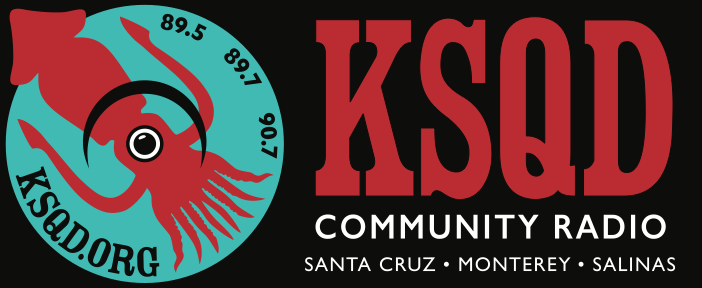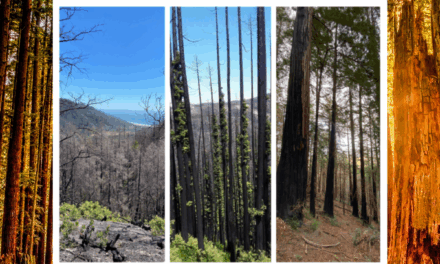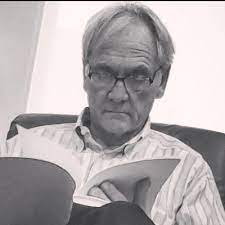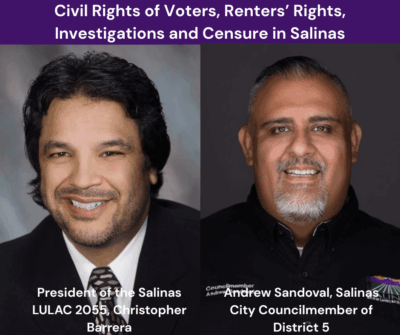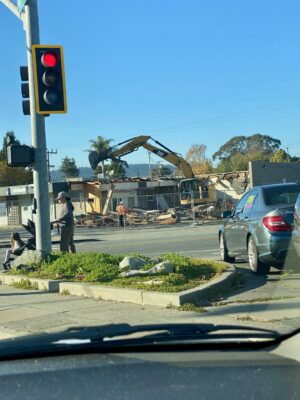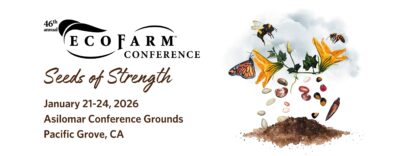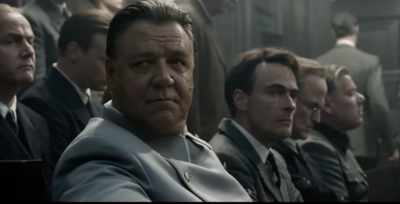KSQD’s two new signals 89.5 & 89.7 will launch very soon. Your dedicated community radio leadership is working hard behind the scenes to make it happen. In this Q&A with Board Chair Rachel Anne Goodman and Chief Engineer Sandy Stone, Christine Barrington gets us a peek at some of the details of how this dream became a reality.
Christine: Thank you so much for joining me here in the studio to give us a behind the scenes look at this magnificent signal expansion that the two of you (and many others) achieved. How far back does your relationship together in radio go?
Rachel: Not that long really. I met Sandy through this project. Somehow she got word we were doing this and we got introduced. And this was right after we had gotten an agreement to get the license, I think it was 2018, and when Sandy said she was interested in doing the engineering I knew it was going to happen.
Christine: It’s interesting, Rachel, that you say once Sandy said that she would come on board, you knew it would work. I remember reading in Lorenzo Milam’s book, Sex and Broadcasting where he said if you have a good radio engineer, you will have a station. They will make it happen. So Sandy, apparently you’re very key! Would you share with us what inspired you to want to be a part of K-Squid?
Sandy: What inspired me to take it on was Rachel, which shouldn’t be a surprise. Rachel is an absolute dynamo and brings such a broad background of radio to the table that I knew this is certainly going to work. I mean, with that kind of knowledge, and nerve, and go-getting spirit–the spirit of we can make this happen–I figured there was no way we wouldn’t wind up having a radio station, a great radio section .
Rachel: And, you know, there were a few naysayers out there and what was really pleasing is when they came up to us and said, “I was wrong. I’m really happy I was wrong.”
Christine: I’ve heard a couple of those people admit that they didn’t think it would work. And it did. And they do give credit….Sitting on the sidelines and hearing the respect that the two of you have for each other, it’s very heartwarming. And I think this respect is at the heart of what makes this station work.
So let’s get to the signal expansion. At what point did the signal expansion begin to flash within you as a possibility?
Rachel: I think almost immediately because we got this pretty cool license for a signal, but it didn’t reach all of Santa Cruz County even. You know, driving south you could get it right about to Aptos and it started to fade out right around Watsonville, and then in places around the Monterey Bay you could get it again. Strangely, for example, you could get it at Cal State Monterey Bay perfectly. So it wasn’t 100% of our region. And I think we always wanted to reach the people, at least, in Santa Cruz County, but ideally in the whole Monterey Bay, because we’re a bio-region, connected by the Bay and by cultural things. So for me, it was a no-brainer that we wanted to get more signal, more places, but it wasn’t immediately clear how we were going to do that.
Christine: You knew the what, but you didn’t know the how…Sandy, when I ask that question, what arises for you? Were you following Rachel’s lead, or did you have ideas in your head also about signal expansion?
Sandy: Well, the first big thing was getting on the air. Once we got on the air, I think everyone breathed a huge sigh of relief, like, gosh, we’re there, we’re on. And then the limitations of what we were doing became more visible, which was as it should be. We needed to focus all our energies on getting on the air. And once we did, we took a look at what was going on. A radio station has a pattern that forms because of the shape of its antenna. And that pattern tells you where you can be received well and where not so well. And our pattern, the pattern of the transmitter that we bought, looks like a watermelon with the blossom end pointed out into the bay. So we have a lot of signal in Santa Cruz. We have less signal as you go down the coast, which I think was a surprise to all of us. But fishermen and dolphins get us really, really well!
Rachel: And giant squid!
Sandy: And then almost from day one, we thought, wait. This is good. I mean, for openers, we made it. We proved all those naysayers wrong. We’re on the air. And now let’s think about how to get the coverage that we really dreamed of. And that’s when the idea of expanding came. And from then it was a question of just how do you do it? It’s a colossal undertaking to make that happen. You have to deal with the FCC politics, local politics, and other broadcasters over which you have no control. You have to begin to exert a kind of mind control over them. And we were actually able to do all that. There’s definitely some magic going on out there that’s helping us make this stuff happen because we are really assembling a radio station that covers the entire Monterrey Peninsula. We’re assembling it out of these little jigsaw puzzle pieces, and we’re doing it. I mean, it’s happening. It’s in process now!
Christine: I love this description of rough magic, and it reminds me of something I’ve heard you say just in your own life, that you step off the cliff and trust that the path will appear. Do you remember saying that, Sandy?
Sandy: I do. I do, and it works for us as a group, too.
Rachel: Yeah, we are definitely a really energetic group and we’re not risk-averse. Obviously, if we had been too cautious we never would have been here at all. What I’m really excited about is that in radio it’s not like you can go to the store and buy a license. They’re not just sitting there on the shelf. We had been looking pretty much since the beginning for an opportunity to expand and it’s not like you can just turn your power up because as Sandy described, you’re constrained by not interfering with other stations. Our circle can’t overlap with another 90.7 or we get in trouble, because then we couldn’t hear either of us. So we really looked around, but found nothing. In fact, one person wanted to donate their station to us, but that’s another story. It wasn’t something we could accept because it was too problematic. The tower rent was going be $5,000 a month or more. And it was right on the ocean. But…We finally went back to the people we bought 90.7 from and said, hey, do you have any frequencies you want to let go of, since you got KUSP’s old 88.9? Do you have any leftovers? You know, it felt like we were asking for crumbs, but we really weren’t. We were just like, do you have anything you don’t want? And we got an email back, “By the way, we do. We have this station in Prunedale that reaches most of the Southern Monterey Bay. And we have these translators on Mount Toro that reach the Carmel Valley in Monterey.”
And, I thought, “Great. Okay. Now we’re getting somewhere. How much do you want?” The conversation went back and forth, and it was at first pretty daunting, but it got down to a point where we felt okay. We raised $300,000 to get 90.7 on the air. We can do it again with a little extra oomph, and that’s what we did.
We started fundraising once we struck a deal, and in less than a year we got to our full amount. And the most exciting moment was in February when we did a mini pledge drive, and we were $47,000 away from our $400,000 goal, which is still quite a ways to go. And we got this email from the Kaphan Foundation that they would match not dollar-for-dollar, but two to one, whatever we raised, up to $18,000. So we did the math and that took us to our goal, and our listeners came through. They heard that challenge and said, “I want to do this, I want to help.” They got excited, and we had until midnight Saturday, and we were on the air Friday morning, and they [Kaphan Foundation] said, “You have to do it by midnight Saturday, or the deal is off.” So we sent out emails, we got on the radio, and by midnight that night, on Friday, we had made our goal–24 hours earlier than we thought we would.
Christine: Yes. I remember I was on HWY 17. I was listening to Charlie Lange’s show when everybody got very giddy and the news came through that the goal had been met, and it was just such a thrill.
Rachel: Yeah. And that’s hundreds of listeners who came through for us. So we’re really, really grateful. And we’re going to have another pledge drive, because that’s what public radio does to survive for its regular operations, like to keep the lights on. We also have new rent that we’re going to have to pay on our tower rent. So it’s not without expense, but we feel in the long run that it will pay off, and it will more than pay for itself. We’re going from 175,000 potential listeners to 645,000 potential listeners, which is a huge gain in potential. It’s a huge expansion.
Christine: And so Sandy, pivoting back to you, as we are hearing this story I’m seeing this image of a boat on the surface of the waves: the deal, the raising of the money, the communicating with the public. And then underneath that is your work that many people never see or hear about on the air, all the technical work. Could you give people just a taste of some of the challenges that you’ve been having and aspiring to fix or bring into being as this expansion is birthed upon the Bay?
Sandy: Well, we essentially built a full-scale, modern, up-to-date, functioning radio station out of a carload of junk. It would take me too long to tell you about all of the maneuvering behind that. But essentially, we started with just a pile of equipment and by dint of frantic running around and finding parts and the help of lots of people along the way who were in the right place at the right time with their talents as well, we were able to get the station up and running. And that’s relatively huge compared to the challenge that we have now to add our two more transmitters. This expansion, believe it or not, is fairly straightforward–although as Rachel said, it did take a bunch of sleepless nights at first to make it work.
It’s hard to really go into detail, but modern studios are mainly a collection of computers. You have a computer in the shape of a control board and computers that all talk to each other, and they all have fragile software and wiring that breaks, and it’s like any large complicated machine: It takes a lot of attention to keep it going. But we’ve been extremely fortunate in that our equipment loves us. If you come from that branch of technology, and if you work with very complicated tech, after a while you get the idea that how you behave toward your tech affects how your tech behaves toward you. So I’ve come to the realization that our tech loves us, because it behaves better over time. In my mind, in my world, this station is truly about love and connection. And so I’m hearing that it applies to our equipment as well. Even our digital console loves us. It’s hugging us. And that, that, totally is right.
Rachel: I don’t know if our listeners know what a translator is or what a repeater is or what a second station would mean. A lot of people think we are just going to turn up the power, but that’s not right at all. We have these two new frequencies. Maybe Sandy, you could do a better job than I can talking about what will happen once we flip, is it flipping a switch? And then what will be the listener’s experience of K-SQUID once we go live with these two new frequencies?
Sandy; The experience will be if you’re in motion, if you’re driving south, you’ll come to a point where you can’t hear 90.7 anymore, and then you’ll tune to one of our other frequencies and we’ll be loud and clear again. And if you live south of Watsonville, say, or around on the Monterey Peninsula, you’ll start listening to us for the first time online at a different frequency than 90.7, and it will be loud and clear.
The technological challenges of making that happen will be invisible, but they involve things like if you’re a big commercial radio station and you have the money and you want to talk to, say your translator, which is 25 miles away, what you do is you get a big satellite dish and you point it at a satellite, and you contract with the satellite company to handle your signal. But we’re not in that league. We are a small, scrappy, entirely listener-supported radio station, all volunteer. We can’t go that way. So we have to follow the law of the fish, which is that the big ones eat the little ones, so the little ones have to be really smart. So we have to figure out ways to get around those technological challenges.
We’re the little fish. So we’re working on that now. We have waves, I won’t bore you with what they are, but they don’t involve pointing a satellite dish at a satellite, we’re figuring out other ways to do it. And that’s your short version, okay?
Rachel: And if people want to right now, if they’re listening before we make the switch over to this interview, what they could do is just check out what’s at 89.7 right now. And if you’re driving all the way out past Salinas, you can see how far it goes. It almost goes to Chula and Gonzalez. So if you’re wanting to check our signal, you’ll get Christian pop music. But just imagine it will be K-SQUID soon and that, you know, we don’t have a date yet, but we’re thinking it’s in the next two months. We feel like that’s a pretty safe bet given the challenges ahead So by summer we will be available at three different places on the dial 89.7 & 89.5 if you’re right in the Monterey Carmel Valley area, and, of course, 90.7, our mothership–the mothership–and it’s taking off and and just radiating its its waves of great local news far and wide in this region.
Christine: Sandy, is there anything else that you would like to add? Have we talked about Mount Toro?
Sandy: Other than it’s beautiful up there and windswept and you can see all around the bay, it’s like magic. There isn’t much to be said beyond the technological challenge of how we get microwave reception up there, whether that’s what we’ll do, or we’ll figure out something else.
But I did want to mention one other thing that is not so much about the technical aspect. It’s about what an amazing, loyal, engaged listening audience we have. We’re a tiny radio station, and we have pulled off a miracle, and that’s entirely because we have such an incredible bunch of listeners out there–people who support what we’re doing and are willing to show up and put their money on the line because they like our programming, and they want us to have our kind of programming available in the Bay Area. And I find that miraculous. I’ve been around that block a few times, and I think our audience is just amazing. They show up. In this day and age, an audience that shows up for you is just incredible. It’s moving for me. And I just want to say that I know you love us, and we love you back. And that’s the squid. That’s the squid.
Rachel: That was pretty poetic and heartwarming and right on the nose of the squid…I’d like to thank our volunteer programmers as well. You know, the rich knowledge of music to meet our community’s needs that they bring was nurtured over years at another radio station that we all saw go down. And that relationship with the audience is still there. I think a lot of those audience members remember what was, you know, and are looking toward this new iteration in a very generous way.
So I want to thank all of our wonderful on-air volunteers, and to remind people listening in the southern part of our listening area that there’s going to be a big invitation to participate in this station, that we’re not just bringing you Santa Cruz, we’re enveloping Salinas, Monterey, and Carmel in a big community hug. And so the news and information and cultural happenings that are going on in all of these communities is something I am so looking forward to hearing more about and sharing. We’re going to get to know each other even better because of this station, maybe creating more connection and resilience between our communities. So I really look forward to that as well.
Christine: Yes, connection and webs are a reflection of life and how it works when it’s working really well. And, we are expanding the social ecosystem over the airwaves. All of us in this region are lucky to have K-SQUID in our lives. And that’s just going to grow over the years. So, thank you, Sandy Stone and Rachel Ann Goodman for joining me here. There’s going to be more to come in this story!

